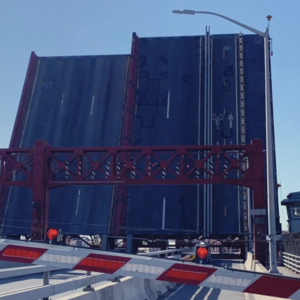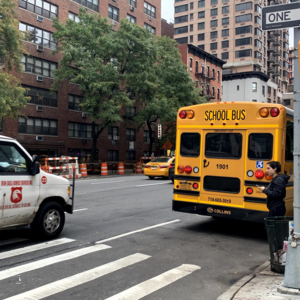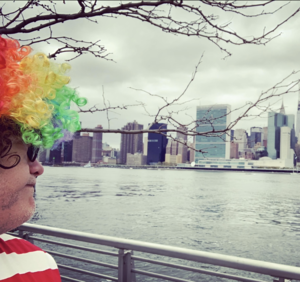NYC’s bus system deserves better than this.
New York City Transit operates far and away the biggest bus system in America, depended on by more people than the three next-biggest systems combined. And the MTA is working to make it even better, with new equipment, new payment infrastructure, and better service. In particular, Select Bus Service (SBS) lines are bringing improved frequency and reliability to neighborhoods that need it.
In all five boroughs, SBS lines have been transformative. Here in Manhattan, the M15-SBS stands in for a subway on the East Side, where we don’t have one; extremely successful lines like the M14-SBS and M23-SBS create improved crosstown connections in neighborhoods that really need them.
But buses run on streets, and in a congested city, they run best when they have separated and protected rights-of-way. We’ve started building those, but progress has been too slow. A harassment lawsuit held up the transformative 14th Street transit-truck priority corridor, costing the people who live and work along 14th Street over 100,000 hours of unnecessary delays over 6 months. Similar lawsuits were filed to delay projects like MTA’s mobility corridor along Ridgewood’s exceptionally congested Fresh Pond Road.
We shouldn’t have to work so hard to get the kind of basic infrastructure that will improve the lives of hundreds of thousands of New Yorkers from the moment it launches.
What we deserve: Bus priority everywhere.




Like bike lanes, bus lanes work. They move more people more quickly, and they move them faster. They make streets safer by fostering denser street life. Like bike lanes, they create a virtuous cycle for neighborhood businesses and business districts, by bringing more people past shop windows via a method of transportation that makes it easy to casually stop in and spend.
More fundamentally: Streets are for people. Lanes and curb frontage, those precious resources, should be allocated in a way that benefits the largest number of people the most broadly and in the most quotidian manner. That means: human access and use first, shared loading and other public-benefit uses second, high-volume collective transport third, and then everything else.
In particular, the worst possible way to use curb space in a congested city is for free storage of privately owned vehicles, and God willing we will have the courage to curtail that over the next decade. In the meantime, we should work to get bus priority infrastructure approved and installed everywhere we have suitable passenger volumes (or aim to foster them): on routes that provide long-distance and crosstown connectivity, on routes that see heavy local use, and on routes that serve people who are disproportionately dependent on the NYCT bus system.
What we get: a lot of nonsense.




It’s hard to overstate the level of bad-faith rhetoric that comes out of New Yorkers trying to defend street parking. The day after the 14th Street transit-truck priority corridor opened, our newspaper of record printed comments from a pizza-shop owner saying it would interfere with his deliveries (why?) and prevent customers from getting to the shop. To which we say: lol.
This is changing, but it’s changing slowly. Brace yourself for a lot more disinformation as the campaign for bus priority pushes into parts of Brooklyn and Queens and the Bronx where it’s sorely needed. Expect arguments about bus priority to be more disingenuous, driven by classism and racism.
The fact is, bus priority improves the lives of the majority in every part of the city where it’s instituted, and its benefits disproportionately flow to the most disadvantaged members of society. That’s the kind of street-level policy New Yorkers deserve.


